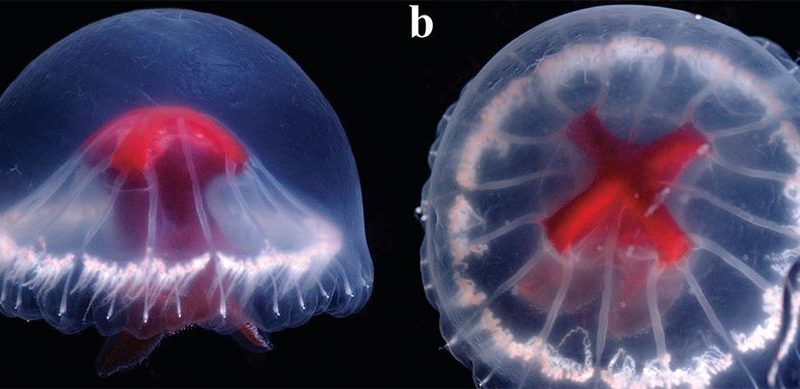AN ODD new species of jellyfish has been uncovered inside a volcanic structure.
The jellyfish features a strange marking on its stomach that resembles a red cross.
For this reason, the researchers aptly named the new species the St. George’s cross medusa, or Santjordia pagesi.
The specimen has a diameter of around 4 inches and features a translucent body.
Researchers uncovered the jellyfish in the Sumisu volcanic caldera near the Ogasawara Islands in Japan.
The Sumisu caldera is a 6.2-mile-wide hydrothermally active volcanic site.
Researchers spotted the jellyfish around 2,664 feet below the Pacific Ocean’s surface; it has only been spotted twice before.
The first time the jellyfish was spotted was in 2002 by a remotely operated vehicle (ROV).
However, because that was the first time researchers spotted it, they had to be sure it was not a one-off mutated specimen.
It was then spotted again in 2020, this time on camera, when researchers revisited the region
Most read in Science
Researchers believe that the cross on the jellyfish’s stomach helps to disguise it from predators in the dark.
It also helps to hide the food the jellyfish consumes as much of its diet consists of bioluminescent organisms that glow in the dark.
Researchers also believe that the specimen may carry a unique venom that could be used in future medicine.
“Maybe it holds secrets more valuable than all the mineral wealth that could be extracted from that place,” André Morandini, a professor of zoology at the University of São Paulo’s Institute of Biosciences and part of the research team, said in a statement.
“All this with the advantage of keeping the species and the site intact,” he added.
The team shared its findings in a study published in the journal Zootaxa on November 20, 2023.











